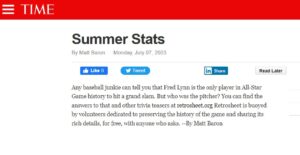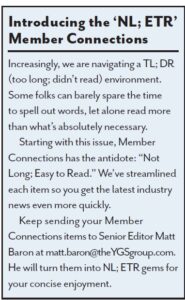Beyond a doubt, of the 80-odd stories to which I contributed for Time magazine in the early 2000s, the one that was most widely read was a July 2003 blurb about Retrosheet, the fantastic repository of Major League Baseball game-by-game accounts.
And it’s not because I wrote so beautifully, though I deployed a serviceable collection of subjects, verbs and predicates. Rather, at 60 words, I wrote so briefly that readers couldn’t help but consume it at a glance.

NL; ETR (Not Long; Easy to Read)
The merits of “writing tight” came up in this month’s issue of Compoundings, the magazine of the Independent Lubricant Manufacturers Association, for which I serve as senior editor.

I introduced readers to a more succinct approach to our “Member Connections” section, which includes briefs about individual professionals’ promotions, corporate mergers, any variety of awards, and so forth.
In the micro-article, I poked fun at–and acknowledged the widespread use of–“TL,DR” (too long; didn’t read) as a staple of our modern, harried communication. Next, boiling down our new style to its essence, I coined what I believe to be a new acronym: NL; ETR (“not long; easy to read”).
As you can see, I have embedded both the Time and Compoundings blurbs in this post. But don’t worry — there won’t be a quiz later. I really don’t expect you to read either one of them.
Related Posts:
Soccer Stories Show `Smart Brevity’ Influence
`Compoundings’ Magazine Story: Inspiration on Top of Information
